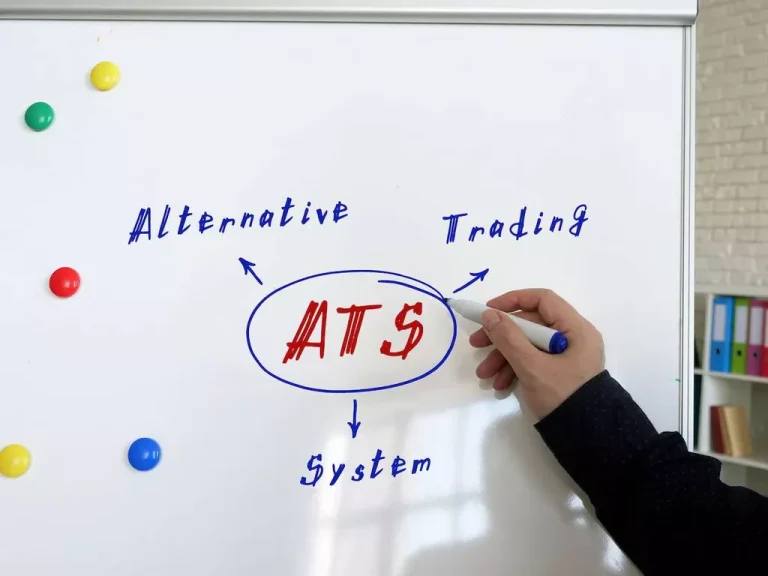Payment for Order Flow PFOF and FINRA Rule 5310: A Guide for Online Broker-Dealers
Content
The Bond Account’s yield is the average, annualized yield to worst (YTW) across all ten bonds in the Bond Account, before fees. A bond’s yield is a function of its market price, which can fluctuate; therefore a bond’s YTW is not “locked in” until the bond is purchased, and your yield at time of purchase may be different from the yield shown here. The “locked in” YTW is not guaranteed; you may receive less than the YTW of the bonds in the Bond Account if you sell any of the bonds before maturity or if the issuer defaults on the bond. A market maker is a dealer who buys and sells stocks and other assets like options trading at specified prices on the stock exchange. Market makers play a vital role on Wall Street, as they create liquidity in the market. Payment for order flow (PFOF)is compensation that broker-dealers receive in exchange for placing trades with market makers and https://www.xcritical.com/ electronic communication networks, which aim to execute trades for a slight profit.
How do I get the best order execution?
Smaller brokerage firms that may have trouble handling large numbers of orders can benefit from routing some of those to market makers. Brokers receiving PFOF compensation may be forced by competition to pass on some of the proceeds to customers through lower costs, like low- or no-commission trading. There are major differences in how market makers and other “wholesalers” compensate brokers for executed trades. Payment for order flow (PFOF) is a form pfof meaning of compensation, usually in fractions of a penny per share, that a brokerage firm receives for directing orders and executing trades to a particular market maker or exchange.
Interactive Brokers Adds High Touch Prime Brokerage, Outsour…
Brokers may be tempted to route orders for reasons of personal financial gain. This situation is in direct conflict with the broker’s best execution obligation, which seeks to drive optimal outcomes for the customer. The ability to fulfil the customer orders outside the exchange allows US brokerage firms to offer certain special order types & features. But that apart, our markets are much better even in terms of product offerings & not just because of better regulations & market infra.
- Order flow is essentially the flow of orders sent, modified and canceled, which interact with other orders and result in executed transactions or trades.
- Many brokers sell their clients’ orders to market makers who pay the brokers for these orders.
- If you are unable to do so, Public Investing may sell some or all of your securities, without prior approval or notice.
- Many top brokers report high levels of price improvement—on as many as 90% of their orders.
- Its because of this later model that investors are taking a harder look at PFOF rather than taking it at face value and questioning whether it presents a price improvement or is a conflict of interest.
Payment for Order Flow Questions
As a retail investor, you can benefit from price improvements on your buy and sell orders. This simply means that if a market maker can fill your order inside the best bid and offer (NBBO), they will do so and pass the savings on to you. If you were to enter a market order to buy 100 shares, you should be filled at a price of $101.08 or lower.
OpenYield Launches Retail Fixed Income Trading Platform
Banking services and bank accounts are offered by Jiko Bank, a division of Mid-Central National Bank.JSI and Jiko Bank are not affiliated with Public Holdings, Inc. (“Public”) or any of its subsidiaries. Margin Accounts.Margin investing increases your level of risk and has the potential to magnify your losses, including loss of more than your initial investment. Please assess your investment objectives, risk tolerance, and financial circumstances to determine whether margin is appropriate for you.
NFTs are for utility, collection, redemption, or display purposes only. All orders for sale are non-solicited by Upstream and a user’s decision to trade securities must be based on their own investment judgment. Recognizing the need for transparency and understanding, personal finance company PiggyBank has set out to unravel the complexities of PFOF in Canada. Some brokers might claim they don’t accept PFOF, but they trade against you instead.
In this case, a large part of the cost for trading is taken up by market makers and other “wholesalers” in the PFOF to brokers. As reports from SEC studies have shown, clients, at least in some cases, may be paying more in the end despite discounted or free trading for many. When it comes to PFOF, however, digital broker-dealers may be tempted to route trades to the highest bidder rather than to market makers who offer the best price and fastest execution. Such an arrangement could be more profitable for the broker while being detrimental to the end investor.
Essentially the market maker is sharing a portion of the profits they earn from making a market with the broker who routes the order to them. This payment typically amounts to a fraction of a penny per share on equity securities. This guide ranks the top brokers of 2024 that don’t accept PFOF, highlighting those committed to transparent, client-first order routing. By eliminating revenue from market makers, these firms raise the bar for execution quality, potentially giving active traders a pricing advantage. For investors who value optimal trade execution, these brokers represent a superior choice.
This approach to compensation is at the heart of many digital broker-dealers’ business models. It allows them to trade profitably against client orders, while their retail clients theoretically benefit from lower or no commissions. Payment for Order Flow is the practice by some exchanges or market makers of paying a broker’s firm for routing its customers’ orders to them. Generally the amount paid is a penny or more per share.Payment for order flow is one of the ways a brokerage firm can make money from executing customers’ trades. Investors use brokerage services to buy or sell stocks, options, and other securities, generally expecting good execution quality and low or no commission fees. While investors don’t directly participate in the arrangement, how well their trade is executed can be affected by it.
While PFOF is thought by many to have a conflict of interest, it has remained the status quo. It wasnt until the GameStop (GME) meme stock saga in 2021 that investors became more outspoken about PFOF and broker-dealer transparency. In fact, SEC Chair Gary Gensler said after the Gamestop saga that payment for order flow can raise real issues around conflicts of interest.
In some cases, these costs may outweigh the benefits of zero-commission trading. There has been a lot of debate around the introduction of PFOF in Europe, with key lawmakers calling for an outright ban, although no decision has been reached yet. The conflict of interest created when brokers are solely reliant on earning fees for selling order flow has created a headache for regulators, especially with the volume and transparency of data to handle. ESMA has provided a warning that in their view, there is uncertainty as to whether receiving commissions for providing order flow would be ‘compatible with MiFID II’. PFOF comes out of the tiny profits trading venues make between the bids and the offers for stocks.

Another weird practice is that by default, the account opened with a broker in the US is a margin account. Stocks are held in the street name of the brokerage, exposing the users to broker risk unlike in India where it is by default held in customer’s demat at the depository. The logic behind PFOF is that it helps in better execution compared to orders placed on the exchange. If they are sent automatically, the execution quality on the exchanges will be much better. Article 27 sets out best execution requirements for investment firms when filling client orders. Order flow is essentially the flow of orders sent, modified and canceled, which interact with other orders and result in executed transactions or trades.
If you wanted to trade stocks before 2013, you would have had to pay commissions to a brokerage firm. Fast forward to today, and nearly every major brokerage firm on Wall Street offers commission-free trading. An important part of the NMS was creating the NBBO, which requires all trading venues to display their best available bid and offer prices, and for trades to be executed at these prices or better. This was meant to promote competition among trading venues, which should lead to better prices for investors. The Regulation National Market System (NMS), enacted in 2005, is a set of rules aimed at increasing transparency in the stock market. Most relevant here are the rules designed to ensure that investors receive the best price execution for their orders by requiring brokers to route orders to achieve the best possible price.

In late 2022, the Monetary Authority of Singapore (MAS) announced a complete ban on payment for order flow (PFOF) in Singapore. The move is designed to protect investor interests by mitigating the risk of conflicts of interest arising in brokers’ best execution obligations to their customers. The PFOF ban will commence on 1 April 2023 and can affect financial firms and individuals operating under a capital markets services (CMS) licence in Singapore. FINRA Rule 5310 cites such compliance factors as price, volatility, relative liquidity, size and type of transaction, the number of markets checked, and accessibility of the quotation. It expects firms to use “reasonable diligence” in caring for best execution. In addition, broker-dealers must conduct “regular and rigorous” reviews of the execution quality of customer trades if they do not conduct individual compliance reviews of every transaction instead.

If they are profiting from PFOF, do they have practices in place to ensure theyre keeping the investors best interest at heart? This is difficult to prove, which is why more and more traders are opting for a PFOF-free environment. However, PFOF is part of the business model of most commission-free brokers although Public has chosen not to accept PFOF. Get the best possible price execution for your trades with Public—a PFOF-free investing platform. The SEC proposed Rule 615, the “Order Competition Rule,” which would require broker-dealers to auction customer orders briefly in the open market before executing them internally or sending them to another trading center.

Leave a Comment